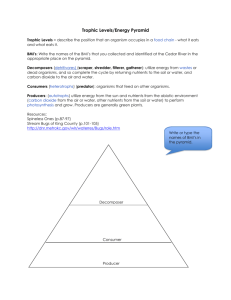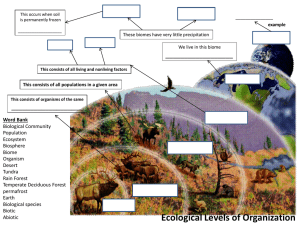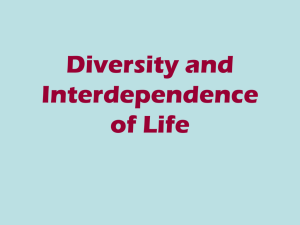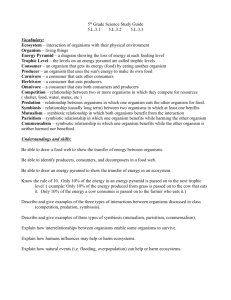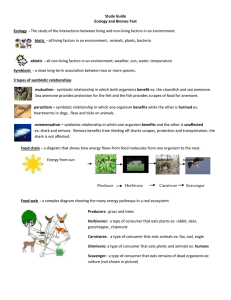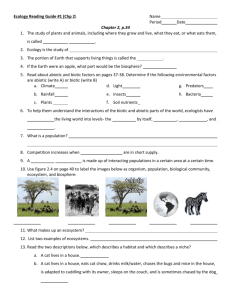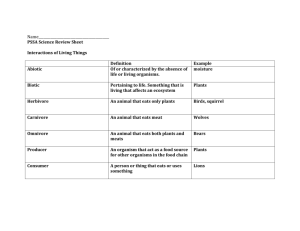Ecology Vocabulary Chapter 2 pgs 35-57
advertisement
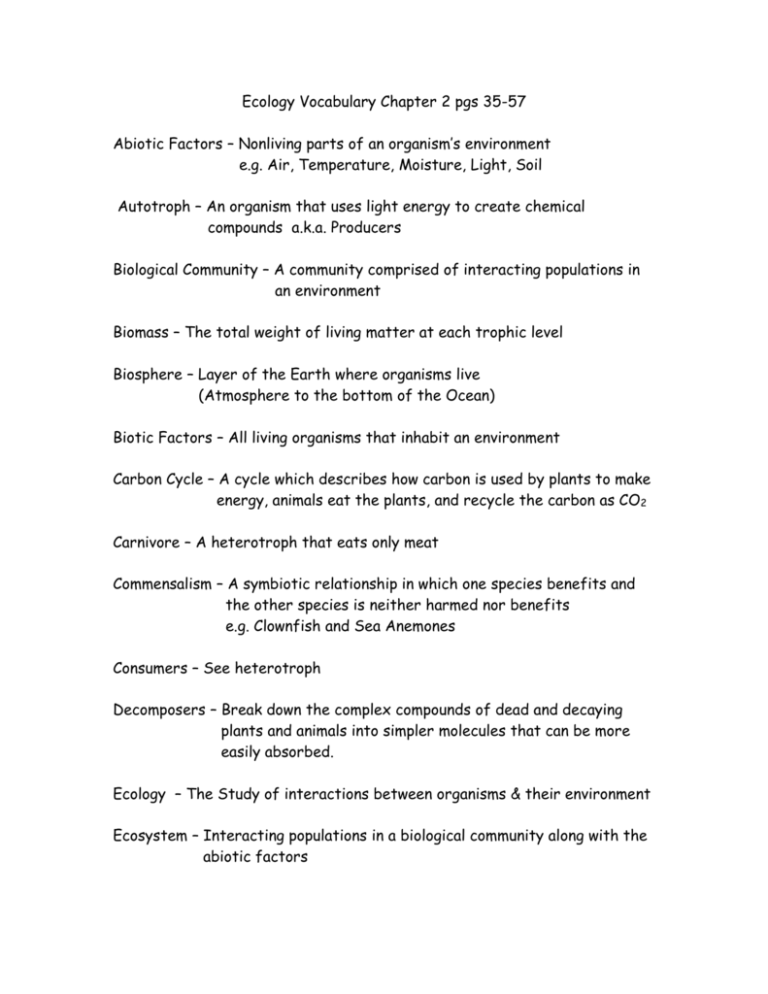
Ecology Vocabulary Chapter 2 pgs 35-57 Abiotic Factors – Nonliving parts of an organism’s environment e.g. Air, Temperature, Moisture, Light, Soil Autotroph – An organism that uses light energy to create chemical compounds a.k.a. Producers Biological Community – A community comprised of interacting populations in an environment Biomass – The total weight of living matter at each trophic level Biosphere – Layer of the Earth where organisms live (Atmosphere to the bottom of the Ocean) Biotic Factors – All living organisms that inhabit an environment Carbon Cycle – A cycle which describes how carbon is used by plants to make energy, animals eat the plants, and recycle the carbon as CO2 Carnivore – A heterotroph that eats only meat Commensalism – A symbiotic relationship in which one species benefits and the other species is neither harmed nor benefits e.g. Clownfish and Sea Anemones Consumers – See heterotroph Decomposers – Break down the complex compounds of dead and decaying plants and animals into simpler molecules that can be more easily absorbed. Ecology – The Study of interactions between organisms & their environment Ecosystem – Interacting populations in a biological community along with the abiotic factors Food Chain – A model of showing how matter and energy are transferred through an ecosystem Food Web – A model that shows all the possible feeding relationships at each trophic level in a community Habitat – Where an organism lives out its life Herbivore – A heterotroph that eats only plants Heterotroph – An organism that can’t make its own food and feeds on other organisms Mutualism – A symbiotic relationship in which both species benefit e.g. bees and flower pollen Niche – The role or position a species has in its environment Nitrogen Cycle – A cycle which describes how plants use nitrogen in the soil to make proteins, herbivores or omnivore eat the plant and use nitrogen to create new proteins, then excrete the nitrogen in urine Omnivore – An organism that eats plants and animals Parasitism – A symbiotic relationship in which one species benefits and the other is harmed e.g. Brown Headed Cowbirds and egg parasitism Phosphorus Cycle – A cycle which describes how phosphorus, needed for growth and development, travels through plants & animals Population – A group of organisms of all the same species, which interbreed and live in the same area at the same time. Populations can share or compete for resources e.g. food, water, mates, shelter Producers – Organisms that create their own food from the sun’s energy Pyramid of Biomass – Each pyramid level represents the amount of biomass required by the level above to meet its needs Pyramid of Energy – Each pyramid level represents how much energy is available within that trophic level. For each step increase only 10% of the energy is available. The rest of the energy is given off as heat. Pyramid of Numbers – Each pyramid level represents the number of organisms consumed by the level above it Symbiosis – A close and permanent association between organisms of different species Trophic Level – A feeding step which describes what an organism eats Water Cycle – How water is used and recycled in an ecosystem


